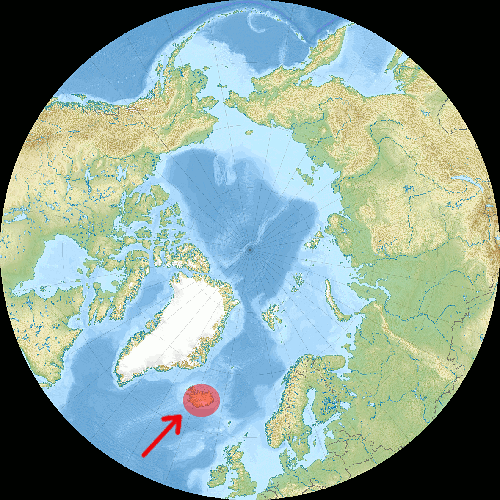
Circle the area on this map

D. Iceland sits on a “hot spot” that rose up from the Mid-Altantic Ridge on the border of North American and Eurasian tectonic plates. It is just one point on the more than 40,000 miles of midocean ridges – a mostly underwater mountain range that circles the globe like the seams of a baseball. The ridges account for some 70 percent of the planet’s volcanic eruptions.
A. Iceland is closer to continental Europe than mainland North America, although its nearest neighbor is the North American island of Greenland. Iceland also is tied to Europe for historical, political, cultural, linguistic and practical reasons.
C. About 60 to 80 percent of the males were of Norse origin from Scandinavia, and a similar percentage of the females were of Gaelic stock from Ireland and Scotland.
B. Greenland is an autonomous territory within the kingdom of Denmark. Icelanders voted in 1944 to terminate a union with Denmark and establish a republic. Denmark, Norway and Sweden were ruled by a single monarch for a bit more a hundred years before splitting up in 1412. Denmark retained control of the islands after the breakup.